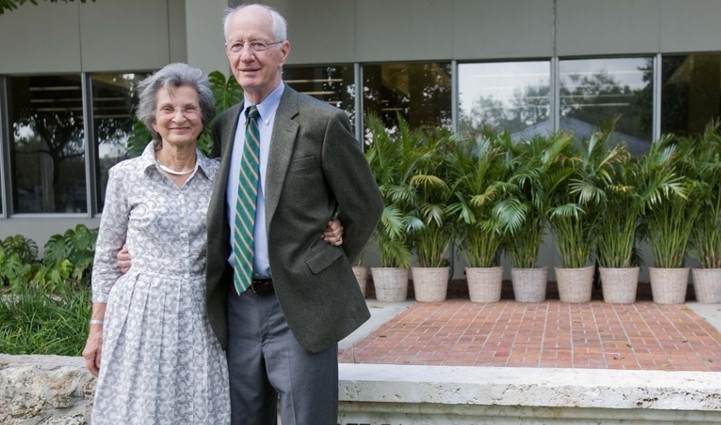Former University of Miami President Edward Thaddeus “Tad” Foote II has passed away at the age of 78, a school spokesperson confirmed Monday night. Foote, born on December 15, 1937, was the school’s fourth president, succeeding Henry King Stanford in 1981 and stepping down in 2001, when Donna E. Shalala took over. He is survived by his children Julia, William, and Thaddeus, and eight grandchildren.
Foote’s wife Roberta “Bosey” Foote passed away in May of 2015. The school spokesperson said arrangements were still being made for a ceremony honoring the former president.
Foote was the former dean of the law school at Washington University in St. Louis before taking over at UM. He had a bachelor’s degree from Yale University and a law degree from Georgetown University, and also served in the United States Marine Corps.
“President Foote’s tenure as president from 1981 to 2001 was marked by a far-reaching and rigorous pursuit of academic excellence that helped to distinguish our students and faculty among the finest in the nation,” said President Julio Frenk, in a statement. “Together with his late wife, Roberta “Bosey” Fulbright Foote, they made Miami their home, and we are a far better and stronger institution and community thanks to them.”
“He was a remarkable leader and a real gentleman,” said Shalala, in a statement from the school. “The University improved greatly under his tenure.”
Foote was known for guiding the school out of academic mediocrity and bad publicity across the nation, including a string of scandals involving the school’s highly touted football team. The bad publicity was marked by a Time magazine cover story on the city of Miami that ran shortly after Foote took over, titled “Paradise Lost?” and a Sports Illustrated magazine cover story in 1995, titled “Why the University of Miami Should Drop Football.”
“Foote has led the University of Miami through a dramatic increase in its academic quality,” Carlos M. de la Cruz said in 2001, when Foote stepped down. “He has been a visionary, transforming leader.”
“Twenty years is indeed a long time, but they went by very fast. It does get a little easier as time goes by. You come to know the institution so well. You learn. You build your team,” Foote told the school’s magazine, upon stepping down. “There’s hardly anything that can happen to you that hasn’t happened to you already. Little is routine, and that’s what makes it so much fun. It’s always different. It’s always new. And it’s always stimulating… You constantly have to keep in mind the priorities of the institution and the fostering of excellence. That is why private research universities exist—to lead.”
When Shalala took over for Foote in 2001, she called him “one of the great leaders in American higher education.”
“He has done a splendid job here at the University of Miami,” said Shalala. “And he has long been deeply respected by those of us in higher education. It is humbling to follow him.”
According to the school’s website, endowment increased tenfold during Foote’s tenure, from $47.4 million in 1981 to $465.2 million in 2000. Research funding also increased from $58.1 million when he took over, to $193.9 million in 2000.
The School of Architecture, the School of Communication and what was known as the School of International Studies were created during his time. Buildings constructed during his tenure included the James L. Knight Physics Building, Sylvester Comprehensive Cancer Center, Law School Library, George A. Smathers Student Wellness Center, Science Laboratories and Administration Building at the Rosenstiel School of Marine and Atmospheric Science, L. Austin Weeks Center for Recording and Performance, J. Neville McArthur Engineering Annex, James W. McLamore Executive Education Center/Storer Auditorium and the Frances L. Wolfson Building were all built during his tenure.
This story has been updated with statements from President Julio Frenk and former President Donna E. Shalala.
Correction, Feb. 16: The Time magazine cover story was about the city of Miami, not UM specifically.






